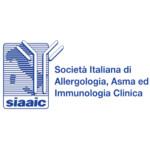
Don’t perform serological allergy tests (i.e.: total IgE, specific IgE, ISAC) as first-line tests or as “screening” assays.
Cutaneous allergometric tests, if possible, should be preferred and considered as the first diagnostic level in case of patients with clinical history of suspect allergic reactions, as they are more rapid, less invasive and cheaper than serological tests. Exceptions from this recommendation are: situations in which it’s impossible to perform cutaneous tests, such as hypo- or hyper- reactive skin status (i.e: chronic intake of anti-histamines or corticosteroids, or dermographism); the unavailability of adequate allergen extracts.Total serum IgE assessment is scarcey useful as it is not indicative of a current allergic sensitization: allergic patients may have low or normal IgE levels, while patients with high levels of total IgE may be not atopic or allergic.
Moreover, all allergometric tests should be interpreted by specialists in Allergy and Clinical Immunology, as an erroneous interpretation may lead ab unexpert doctor to propose therapeutical behaviours potentially harmful for the patient.
Sources
1. Boyce JA, Assa'ad A, Burks AW, et al. Guidelines for the diagnosis and management of food allergy in the United States: report of the NIAID-sponsored expert panel. J Allergy Clin Immunol. 2010 Dec; 126(6 Suppl): S1-58.
2. Sicherer SH, Wood RA; American Academy of Pediatrics Section On Allergy And Immunology. Allergy testing in childhood: using allergen-specific IgE tests. Pediatrics. 2012; 129(1): 193-7.
3. Kerkhof M, Dubois AE, Postma DS, Schouten JP, de Monchy JG. Role and interpretation of total serum IgE measurements in the diagnosis of allergic airway disease in adults. Allergy. 2003; 58(9): 905-11.
Attention. Please note that these items are provided only for information and are not intended as a substitute for consultation with a clinician. Patients with any specific questions about the items on this list or their individual situation should consult their clinician.


Recent Comments